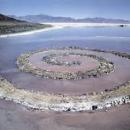Lab:
The Lab is a source of information for Artists and Art Lovers alike. You can find useful information to help develop your career as an artist such as tutorials, interviews, news, and a lot more!

Contemporary Art Conservation.
Over the last twenty years, contemporary art restoration and conservation techniques have had to be reinvented and adapted to suit new forms of artistic expression. Innovation in restorative techniques and materials, and the search for new preservation methods has spurred endless research efforts among master restorers.
This phenomenon began in the 1970’s when a number of US artists began to look for new forms of artistic expression that rejected traditional techniques such as sculpture, painting, and conventional materials, due to the limitations they placed on the creative process. Traditional conservation and restoration techniques have had to be adapted and reinvented in order to continue their role in contemporary creative heritage.
Documentary materials and advances in image and sound recording provided great technical support to these new art forms, especially when we consider that the majority of the works produced were temporary in character due to the ephemeral materials used by the artists. It was from this point onwards, that any situation, event or other element conceived by an artist, could become a work of art, and any action could act as the raw material for a piece of art: talking, walking, light, sound, organic material, a piece of text etc. This can been seen in art produced since the 1970’s, the work is inseparable from the environment in which it has been created.
Aspects of conservation and restoration are on a par with the research carried out by the artist in search for ways to fulfil his or her project. Contemporary artists research resins, titanium, different types of steel, glass, cement, fabrics, rubber etc. as the raw materials with which to develop their projects and make them durable over time. However, it’s still a process of experimentation as no research has been carried out yet on how these kinds of materials can actually survive the passage of time.
Artist’s recent interest in the innovation of industrial materials with which to produce their work, means that this process is very much still ‘trial and error’. Plastic materials, resins and acrylic paints produce seductive textures and their durability is demonstrated.
We are now facing a new phenomenon, in which preventive conservation has become essential in order to ascertain the potential damage a piece of art could suffer over the years, enabling the artist to take preventive action to limit and delay its deterioration. Nowadays, contemporary art preservation and restoration not only depend on curators but also on scientists, chemists, physicists, and laboratories that research the materials used by the artist. The research field is huge, and curiously, the work done by curators on more traditional, primitive art made with fabric, woods and resins are the most advanced in this field and contribute greatly to contemporary art conservation.
Complicity with and accessibility to the artists are undoubtedly big advantages in the preventive conservation of their work, as they can indicate the kind of conservation and installation their artwork requires. Decisions regarding the upkeep or restoration of the original materials, rebuilding the piece entirely or allowing the passage of time to leave its mark on the piece, are important decisions upon which the artist must provide his or her input. What would Robert Smithson say today about the conservation of his piece Spiral Jetty where more sand was added to prevent the water from rising? Dialogue with the artist is absolutely crucial in order to guarantee the integrity of the piece and, if the artist so wishes, assure its durability over time.


